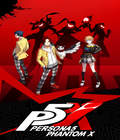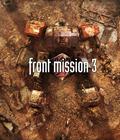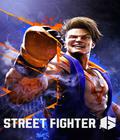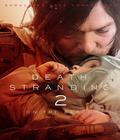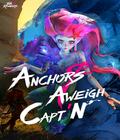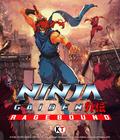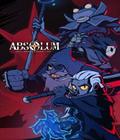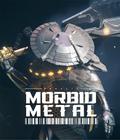
Genre: Action
Publisher: Capcom
Developer: Capcom
Release Date: March 23, 2004
 When Gamecube gamers think of Pikachu, Mr Gaming Watch, and Captain Falcon, most of them will instantly associate those characters with the name Smash Brothers, a renowned four-player brawler that uses several famous gaming characters. Unfortunately for us PS2 gamers, we will never see this game on our system, but Capcom has recently decided to try and give us a game of similar caliber. Can it give the PS2 a game as popular as Smash Brothers?
When Gamecube gamers think of Pikachu, Mr Gaming Watch, and Captain Falcon, most of them will instantly associate those characters with the name Smash Brothers, a renowned four-player brawler that uses several famous gaming characters. Unfortunately for us PS2 gamers, we will never see this game on our system, but Capcom has recently decided to try and give us a game of similar caliber. Can it give the PS2 a game as popular as Smash Brothers?
We all know that Capcom has a wide selection of games and can use a variety of characters in any single game. Previously, we have seen them combine their X-men and Street Fighter series, Marvel vs. Capcom, and many more. Instead of taking that route again, Capcom decided to use a different set of characters, one that many of us PS2 gamers are familiar with: the characters from Onimusha, one of Capcom’s most popular hack-and-slash games. If you’ve never played that series, I definitely recommend you try it before the last chapter comes out.
Onimusha’s storyline is pretty straightforward. You follow the life of a hero, either Samanosuke (who received a gauntlet from the Ogre Clan which gave him the power to absorb souls in Onimusha), or Jubei (who gained the same power from his mother in Onimusha II, except that his power is cursed with the power of the Oni). Their goals are the same: they must defeat the evil demon Lord Nobunaga, the famous Japanese emperor who was rumored to be possessed by demons. He has returned as the final boss in Onimusha: Blade Warriors, and he will probably be present in Onimusha 3.
In order to face Nobunaga (when your character is opposing evil) or Jubei and Samanosuke (if you are playing on the demon side), you will need to advance through story mode. There are a total of ten chapters before the big fight, so prepare yourself by leveling up your stats and obtaining essential items and weaponry in order to give your character the upper hand. You can level up your attack, defense, and magic stats. No two characters are alike, and in their effort to make this believable, Capcom made each character differ in strength and speed. You can also see that characters have a different base stat; depending on that base, you should consider leveling what the character is weakest at, or just put all of your levels into one stat. The leveling system is somewhat idealistic and also discouraging, because any stats you add to the attack won’t affect your character until you have actually reached the next level. Personally, I wouldn’t have minded if the stats rose slowly over time. It would have given me a less tedious task when it came to beating the incredibly hard bosses.
Before you can face these bosses, I strongly suggest you run through the tutorial to learn the basics of the game. Square is used to attack, Triangle to kick, Circle to absorb souls, X to jump, R1 to drop into a ready stance, R2 to throw an item, and L1 to block. Once you have a grasp on the controls, I strongly suggest you pay close attention to the more advanced commands the tutorial will touch upon, such as critical hits, special moves with orbs, and combo attacks. Getting the hang of those will make it easier on you to take out almost any enemy they throw at you. While the enemies differ, they all have the same attacking pattern, repeating constantly because the characters lack a diverse move set. The only time you may see a variation in attacks is when you play or fight against different characters. The usual attacks are the standard kick, sweep, regular attack, and the launcher attack (which sends the enemy into the air). Even though it’s such an easy move set, the fights are not at all as easy as you might expect. The enemies tend to block, and as always, breaking their guard is not a simple task. The easiest way is to kick, since this move is unblockable by the shield, but it’s probably one of the harder attacks to combo. However, if you can find a way to combo this, your character can be virtually unstoppable.
Well, my characters are nowhere near unstoppable, but I am slowly bringing them up to a comparable level by going through story mode. Like I mentioned above, the character stats level up as you progress through the game, implementing a new game+ type system which allows you to continue leveling up your character from your previous game. The game keeps a running count of how many times you’ve completed the mission as well as the character stats. Although, the main goal for replaying isn’t to level up your characters; rather, you will be going through the story several times just to unlock the insane number of secrets that are hidden in the game.
Secrets range from finding special items to unlocking more playable characters. I am currently trying to find a way to unlock all of the characters, but I am having trouble figuring them out and have needed to turn to the FAQ’s for help. And let me tell you this: even though I refer to the FAQ’s, I still find it very difficult to do, especially since it seems they do not have a complete guide on how to unlock all 12+ remaining characters. The ones that do offer suggestions tend to list methods I never would have thought of, and a majority of them require you to play the character more then once, reaching a certain level or beating the game a fair amount of times.
Even if you play the character over and over again, their story never changes; they are always assigned the same ten battles. However, depending on which side and character you choose, the battle objectives, stages, and bosses will differ. As I’ve said above, the evil side fights Samanosuke and Jubei, while the good side fights Nobunaga. In order to lead the characters to their final battles, the game tells the characters’ almost non-existent story through small cut-scenes that inform you of who you may be fighting and what your main goal will be. Most of the good characters will see generic cut-scenes for their side of the story, and the same goes for most of the evil characters. You may eventually become bored with the repetition and put the game aside only to find that it draws you back later (or at least that’s what happened to me).
This may be because of the game’s simplicity. The game relies heavily on button mashing, hacking and slashing away at the opponents until you manage to defeat them all. It may also relate to the fact that I really want to get better at the game because some of the moves require an advanced skill set from the gamers, especially the critical hits. Timing is so crucial that a split second slower or faster will cause it to fail. If you are able to pull off critical hits consistently, you may enjoy this game so much more since these hits take away massive life and give more orbs when used in a finishing blows. I would have really appreciated it if I had that skill, especially against Nobunaga – he must be the cheapest boss on the cheapest level. Fire and poison all around the level making it extremely hard to just concentrate on killing him.
This isn’t the only level in which there is background interaction. Almost all levels have some sort of interaction with the character, ranging from simple objects you can destroy all the way to levels that can cause damage (from things like fire and steam). These devices are usually strategically placed, and if you notice they have a set timing, but I find it hard to move away when crunched into a duel in the middle of battle. The easiest way I’ve found to avoid them is to try and change levels. Each stage has around three or more levels which you can switch whenever necessary. The stages are also in 3D, so you can clearly see a depth difference when you move from level to level. Because of this transportation ability, the stages can be massive. Capcom has brought back classic stages from Onimusha and Onimusha II (and maybe III), so if you’ve played those, you will certainly remember some of these places where crucial battles took place.
Remaking these levels was a great idea since they were a bit bland in their original games (Onimusha or Onimusha II), but in Onimusha: Blade Warriors, the levels look wicked. I don’t know why such a design can draw so much interest, but it may be that I feel like the depth perception adds so much more to the level. As you can see, I obviously enjoy the artistic style of the levels; they were detailed to the last dot. Having sakura petals drop from trees on certain levels just gives another sense of enjoyment even if the character models don’t live up to my expectations. I was a little disappointed that the characters look rather 2D, but once you place them on center stage, it’s an entirely different story. Your concentration moves from the character to the goal at hand, and if you’re lucky, to the music.
The audio tracks in Blade Warriors are very soothing, reviving the old war-type feel and implementing them into their respective stages. It never seemed to grow monotonous, and I never once complained about the music. I did complain a lot about the voice actors, though; I truly wished there was an option to listen to the original Japanese track. The voices just didn’t match the characters at all, and they became utterly annoying. Even though Onimusha II characters were considered pretty bad, I enjoyed it so much more than these new ones they decided to use (well, other than Jubei’s mom – that one will haunt me for life). Thankfully, the characters don’t talk that often, or else I may have been forced to mute the audio, and then I wouldn’t be able to listen to the awesome instrumentals for the game. But the main focus of the game seems to reside with the slashing and attacking end, hearing the slice of the sword, the power behind the special orbs, and the tug-o-war battle for souls.
And there is no better battle for souls than in multiplayer, which I would say can be the heart of the game. There aren’t that many modes of play, but it can last a few hours with fellow friends. Capcom should have been wise enough to allow us to customize the battle conditions. The game does allow you to set the number of lives or victory souls required to win, but it’s just not enough. The number of lives can be quite low, and it would have been great to have the ability to play a certain amount of time to see who has the most kills. It is incredibly fun to see you critical counter your friend – you just can’t help but get in their face when you do.
Overall, this game is pretty solid with a few flaws here and there. It does give Smash Brothers some competition, but victory still goes to Smash Brothers due to its more finely-tuned system. This game may have been more enjoyable if it had been given a better storyline, but I guess that may be the limit of a single DVD game; it would have been nice if different accomplishments yielded varied results. One thing you players may want to try out is the phantom realm, although it’s only available to fighters of justice. This is where you go on a killing spree, progressing through the several levels they provide as you attempt to reach the end. The difficulty gradually increases, eventually becoming extremely hard, but this gives the gamer the highest reward: unlocking more characters for multi-player battle. It is crucial to unlock all of the characters in single-player mode, because only then will the game truly shine in multi-player mode. Starting out with only twelve characters just doesn’t cut it for massive brawling fun. I think you should give this game a shot; you may enjoy it. PS: To unlock the last character, rumor has it that you need a saved game from Onimusha 3. Also, Capcom has somehow included Megaman characters
Score : 8.2/10


